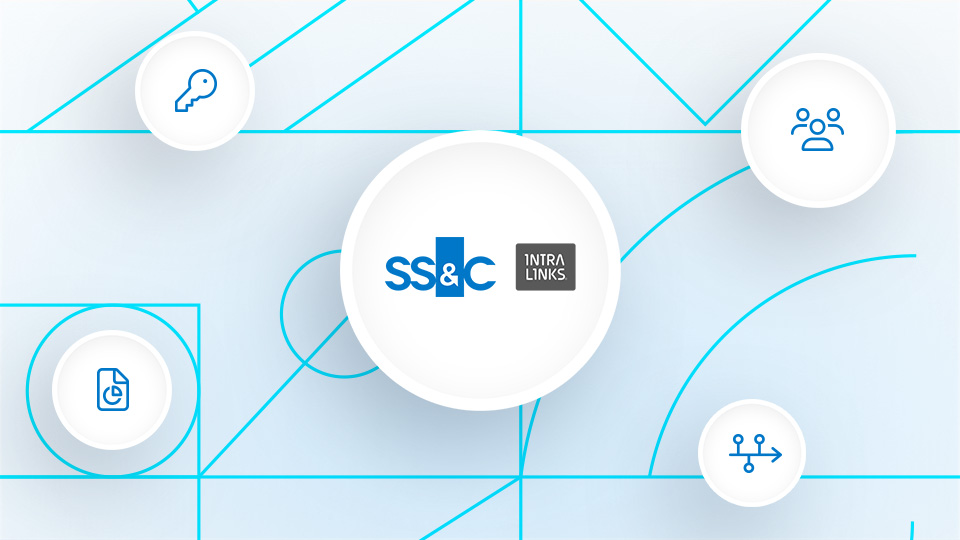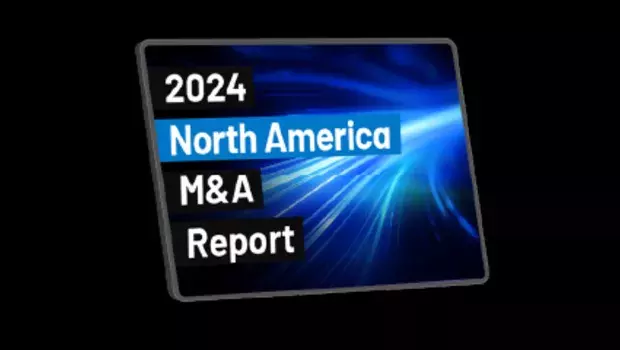Podcast: Automotive Suppliers Taking Different Routes To An All-Electric Future
The electric car revolution and its impacts
In this week’s episode, we find out more about the electric car revolution and how it’s impacting automotive suppliers. Joining host Julie-Anna Needham is Sam Weisberg, deputy editor and industrial senior reporter for Mergermarket. Dealcast is presented by Mergermarket and SS&C Intralinks.
In this episode, you'll hear about:
- America's growing appetite for all-electric cars.
- How the electric car revolution is affecting suppliers.
- Why suppliers believe widespread adoption of electric vehicles in the U.S is over a decade away.
Transcript
JULIE-ANNA NEEDHAM: Welcome to Dealcast, the weekly M&A Podcast presented to you by Mergermarket and SS&C Interlinks. I'm Julie-Anna Needham.
In this week's episode, we're finding out more about the electric car evolution and how it's impacting automotive suppliers. I'm joined by Sam Weisberg, deputy editor and industrial senior reporter for Mergermarket. Hi Sam.
SAM WEISBERG: Hi. How are you?
JULIANNA NEEDHAM: Good. Very good. Thank you. Thanks for joining us today. Let's start with the big picture. We know that across the globe, carmakers are phasing out the manufacture of internal combustion engines as they work toward the Paris Agreement to net zero. But what is the situation in the U.S. and what's the appetite for electric vehicles there? Obviously, The country's home to Tesla, which has led the charge in many ways for the mass uptake of electric cars globally.But America as we know is a country that loves its cause. It's got one of the highest rates of ownership in the world.
SAM WEISBERG: Yeah. I would say the appetite is very, very strong. That the numbers are interesting because of course, on the whole electric vehicles make up a pretty small percentage of overall cars on the road, especially in this quite abnormal year and a half of COVID. So it's 2% to 3% of the vehicles on the road. But you're seeing analyst reports. There was a very interesting one from UBS actually which said that while internal combustion engine vehicles, regular vehicles today bring in combined revenue of around USD 1.8 trillion.
That's actually projected to shrink to USD 1.07 trillion by 2030. While electric vehicles are going to see a huge bump up from $1.6 trillion now to USD 182 billion. And of course, but that's by 2030 so that's where we're at. Is that there's a lot of enthusiasm, a lot of appetite, strong projections. But of course, only two to 3 percent of the cars on the road and or even nine years away is a long time to predict how disruptive it's going to be.
JULIANNA NEEDHAM: So how are the major US carmakers adapting to this shift in electric. We've seen a lot of the European ones, although not all of them, set out their timeline for stopping production of internal combustion engines.
SAM WEISBERG: So Yeah the big three, I would say, especially Ford and General Motors have some pretty ambitious goals. General Motors said they're going to phase out gasoline-powered vehicles by 2035 and a few weeks after that this was all early to mid-2020 they said this. Shortly after that, Ford said they have an all-electric target for passenger vehicles I think, at least in Europe by 2030 and I would imagine America shortly thereafter.
JULIANNA NEEDHAM: And what about the suppliers. How are they adapting to this huge shift in the industry?
SAM WEISBERG: So it varies. You have a company like Eaton which is diversified but they have a pretty big vehicle products division and they're announcing that they're going to develop these gearing solutions for electric vehicles to improve the vehicle's range and performance. They have what's called an E-mobility portfolio. It's all-electric vehicle components and so they're already getting on that. Making those components. BorgWarner is even more ambitious.
They want 45 percent of their total revenue from electric vehicle products by 2030. It's less than 3 percent currently, so that's a huge bump even if it's nine years away and they're going to deploy around USD 5.5 billion for merger and acquisitions of electric assets by 2030. They plan to spend that amount by 2030 and they're also going to divest their older internal combustion engine businesses. That's projected to be a total of $3 to $4 billion in revenue by 2025 so that's very near-term. But then you have a company like Taneco, which has a lot of internal combustion engine components and systems.
A lot of people are saying, Oh those guys have to worry. They really have to get out of the trade. They have to really start phasing down but a lot of people are very calm saying 10 years is a long time and some people are saying this might not happen till 2050. And so Taneco on their earnings statement at the end of the year said for the foreseeable future, It's expected a majority of powertrains for light and commercial vehicles will be gasoline and diesel. And they also do hybrids so some people still think like hybrids are the way to go for now.
JULIANNA NEEDHAM: So different strategies from different companies but you mentioned there some of the really ambitious ones that are looking to phase out the production of components or parts for internal combustion engines within the next decade. How is this impact to the M&A strategies of the OEMs.
SAM WEISBERG: So I would say the biggest impact it's had is-- OK. So the big players are announcing this big shift over and then you have all these smaller companies trying to be as disruptive as possible but they have a ways to go. And so they want to compete with the Fords and the GMs of the world. And so the best way for them to do that, especially in a year like this with just a very slow year, and it ends and there's private equity firms and investment firms just sitting on tons and tons of cash and capital.
The fastest way to do that is through the SPAC, the special purpose acquisition company. And so you're seeing a few of those. Some have come to fruition and some are there's a lot of talk that it could come to fruition. And so I would say that's the biggest as far as M&A. I did see an interesting one recently. There was a company called, this wasn't quite a spec, but there was a company called Battle motors. And it was started by a guy who had already founded and taken public a company called Romeo Power which was electric batteries.
And he took that public and it was successful. And so he started Battle motors which is a shell company and then they bought a very interesting business. It's called the cargo carrier and they make electric dump trucks actually and refuse trucks. So they bought them and that's now their main products and they're still integrating it, building out their factory but they're going to be doing a lot of M&A. They want to triple their revenue within a year. So they're going to be pretty ambitious on the M&A front.
JULIANNA NEEDHAM: So how do you see the shape of the industry-changing with just this huge shift in the sector.
SAM WEISBERG: So I think right now, I meant to mention this earlier, you're already starting to see actually some issues with the specs. So like one of the companies that went public, Lordstown Motors, has already had some issues that they've had a huge loss. They didn't generate the cash that they expected to and they already need additional capital. So that's causing some investor trepidation if not alarm and there have been some other companies that just haven't traded close to where they traded when they first floated. because there are so early stage. Because they have a ways to go.
So I think it's going to take a couple of years to really see how disruptive these companies with the hot new technology are and to see how quickly they're moving in comparison to say Ford and GM who already have the infrastructure and the capital to make the shift. But I would say, either way if you're seeing Ford and GM and their suppliers make that leap, even if you don't have the smaller competitors making that big a dent, that equals more electric vehicles on the road. More electric technology on the road and I think that'll be, we're going to get closer and closer. I mean, I certainly think by 2030 we'll be closer to what people are projecting now if not quite as ambitiously all-electric.
JULIANNA NEEDHAM: And all these companies, are they pursuing cross-border deals or are there enough homegrown businesses for OEMs in the car companies themselves to acquire.
SAM WEISBERG: I guess it really it depends on the business. I know of that company I just mentioned, really they want made in America. They want the most made in America technology. To have that is like a boasting point but you're certainly seeing European, electric vehicle, self-driving vehicle investments from U.S. investors. You're seeing a lot of Chinese disruptive tech that's getting some U.S. investment. But I would say, so far the acquisitions in the space, there's plenty going on in America.
JULIANNA NEEDHAM: And what do you say that the U.S. OEMs are pursuing the same approach as their European or other international counterparts?
SAM WEISBERG: Yeah. I think definitely the Eaton's of the world, the Ford-Warners are definitely like this is not going to stay the same. And 10 years is faster than you would think and we have to start shifting over. There is some skepticism. There's definitely some healthy skepticism. I talked to one company that sells every car part. Old, new, electric, hybrid, internal combustion engine and they think we have a ways to go. They think 10 years is even a little too ambitious to think the number of electric vehicles on the road is going to skyrocket.
There's trepidation about infrastructure. There's trepidation about the driving time that the current power charging stations give you. That if you're not in a big city with lots of power charging stations, if your commute is longer than say 40 to 50 miles a day, if you don't have the infrastructure at home to charge your car, and your job or your lifestyle entails a lot of long-distance driving, there's a paucity of charging stations. And so nobody wants their car to break down on a 200-5300 mile trip and the electric battery companies and charging station companies are trying to get around that. I think Tesla is rolling out a vehicle that can get 400 miles per charge but there's definitely still ways to go.
JULIANNA NEEDHAM: And with Joe Biden as the president now, is there a greater appetite to put in that infrastructure?
SAM WEISBERG: I think he'll definitely support. Yeah. More and more and more infrastructure. Definitely.
JULIANNA NEEDHAM: And just one last question. We mentioned it a couple of times. Why did Tesla fit into this picture? How do they work with the suppliers? Have they created their own supply chain? Are there new companies that only supply Tesla?
SAM WEISBERG: That's a great question. I'm not sure about the only supplier but I think they will have a few captive suppliers. I feel like the company's going public now doing the specs. The small guys that are trying to get this infusion of capital and really get the capital to boost their product, could end up being capped as suppliers to Tesla. Or let's just say like mainly Tesla. It wouldn't surprise me at all.
JULIANNA NEEDHAM: Great. Thank you, Sam.
SAM WEISBERG: Thank you so much.
JULIANNA NEEDHAM: That was Sam Weisberg, deputy editor and industrial senior reporter for Mergermarket. Thank you for listening to this week's episode of Dealcast presented by Merger market and FFSC interlinks. Please rate, review, and follow the podcast. You can find us on Apple Podcasts, Spotify, or look out for your Mergermarket news alert. For more information, check out our show notes. Join us next week for another episode.




